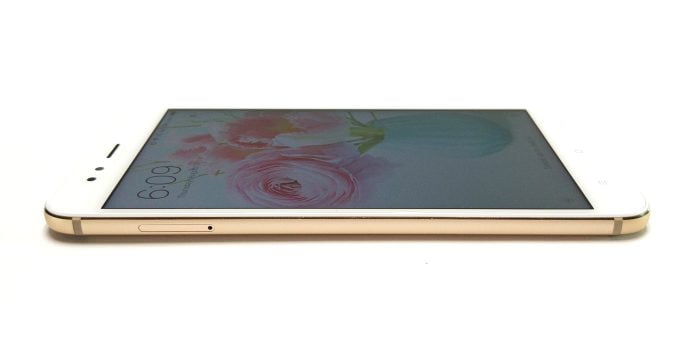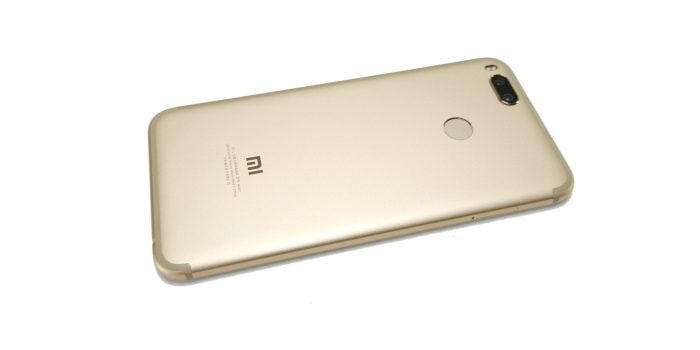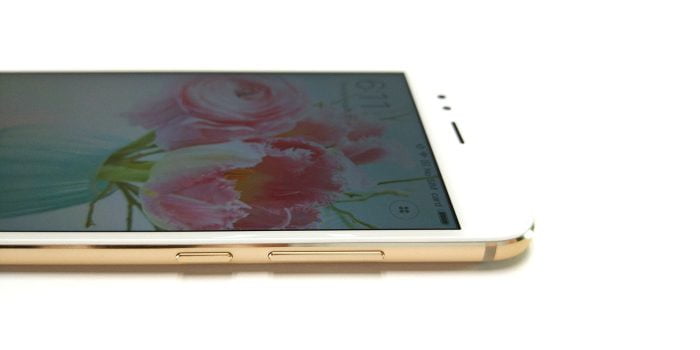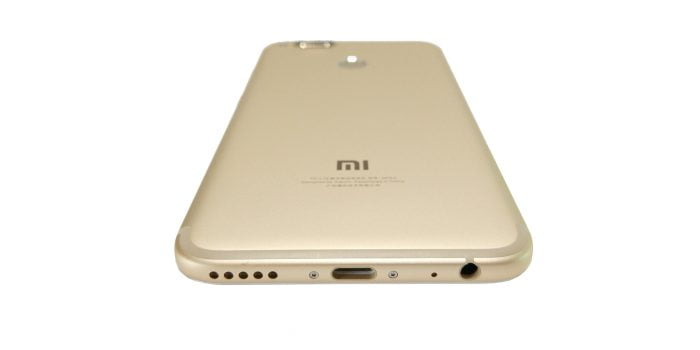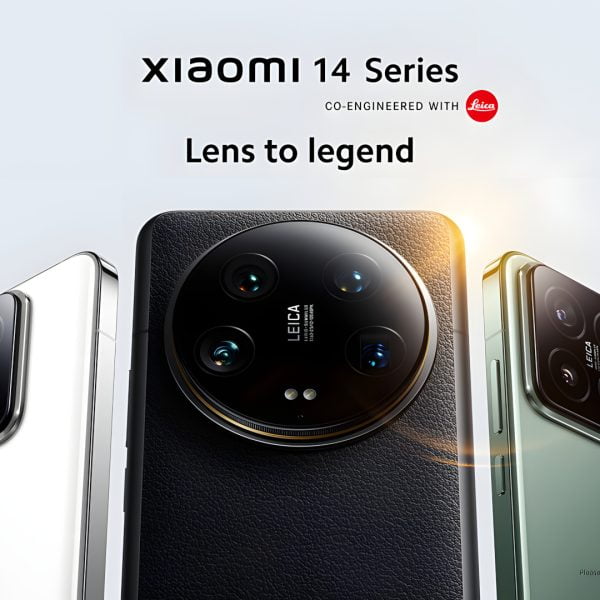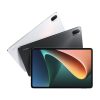Xiaomi Mi A1 / Mi 5X: Foreword
Meanwhile, the successor is the Xiaomi Mi A2, appeared. We also took a closer look at this in the test!
Xiaomi is known for introducing a new smartphone almost every month. Existing model series are often expanded with new devices, which means you quickly lose track. The 5 Mi model series alone, which also includes the Xiaomi Mi 5X, now consists of 5 models that couldn't be more different. The Android One smartphone “Xiaomi Mi A5” has been released as an “international” version of the Mi 1X. In addition to the pure stock Android experience, this also offers the usual mobile phone frequency bands in this country.
Design, workmanship and delivery
First of all: The Xiaomi Mi 5X and the Xiaomi Mi A1 are identical and only differ in terms of the supported cellular frequencies and the operating system. The Xiaomi Mi 5X is mainly intended for the Chinese market and does not support LTE band 20. The user interface is MIUI 8 or 9. The Xiaomi Mi A1, on the other hand, supports LTE Band 20 and is delivered with Stock Android! As an Android One device, the Mi A1 receives software updates directly from Google!
The smartphone impresses with its attractive aluminum unibody housing, in which both the housing frame and the back are made from one piece. Compared to other unibody models from the manufacturer, the frame is comparatively flat and merges steeply into the rear. The frame edges are simply rounded and only the antenna covers protrude discreetly. With regard to the housing color, there is a choice of black, gold and rose gold. The dimensions of the 5.5 inch device are 155.4 mm in length, 75.8 mm in width and a narrow 7.3 mm in thickness. The weight is 165g.
The front is the 5.5 inch display, which is surrounded by a 3.5 mm wide bezel. Due to the 2.5 display glass, the edges of the glass are clearly rounded, but do not merge seamlessly into the unibody case. Below the display there are three capacitive buttons that are also illuminated. Above are the auricle, the front camera, a proximity sensor and a white notification LED.
The housing frame has a typical structure and offers the SIM slot on the left, the power button and the volume rocker on the right, below the USB-C socket with adjacent speaker and microphone and a 3.5 mm audio connection. An infrared transmitter and another noise-suppressing microphone form the top of the housing frame.
As already mentioned, the back is kept extremely simple. The dual main camera with LED flash is located on the top left. In the upper third of the back of the case, the round fingerprint scanner is also embedded in the case. The “Mi logo” is located in the lower third. The back is not removable, which means that the battery cannot be changed.
The build quality is not objectionable overall. The smartphone leaves a particularly high-quality impression with a good feel. The package includes the smartphone, a charger with NEMA-1 plug, a USB-C cable, a SIM needle, and a Chinese user manual.
Display
The display has a diagonal of 5.5 inches and has a full HD resolution. The panel is of the "LTPS" (Low Temperature Poly Silicon) type and, in contrast to conventional LCDs, is characterized by lower power consumption, more compact manufacture and higher display brightness. The point density is 403 DPI, which means that the display is razor-sharp. Colors are mainly reproduced in a subtle but natural way. If you don't like the rather cool color rendering, you can correct the color and contrast within the display settings. An additional reading mode ensures that blue light is filtered, which on the one hand spares the eyes while reading and the sleep-night rhythm is less impaired.
At the same time, the display of the Xiaomi Mi A1 or Mi 5X impresses with its accurate viewing angle stability, which can also withstand maximum viewing angles. The luminance is 450 nit, which means that the display should be easy to read even in stronger sunshine, at least in theory. In practice, however, the highly reflective display glass impaired readability in direct light. The automatic brightness adjustment worked flawlessly in the test.
The touchscreen supports up to 10 simultaneous inputs. All inputs were recognized precisely during the test phase. As expected, so-called ghost touches did not occur. Which protective glass Xiaomi uses on this smartphone is not known, but even after several weeks of testing, with daily use, no signs of use were noticeable.
Performance
The centerpiece is a Qualcomm Snapdragon 625 system-on-chip, which can be assigned to the Qualcomm mid-range sector and was released at the beginning of 2016. The processor, manufactured using the 14nm process, consists of 8 Cortex-A53 cores that clock at up to 2 GHz. The processor graphics are an Adreno 506 GPU. The memory configuration amounts to a 4GB LPDDR3 main memory and, depending on the model, a 32GB or 64GB eMMC 5.1 flash memory. A memory expansion using a micro SD memory card is provided. However, one should note that a so-called hybrid SIM slot was used, which allows either the use of the dual SIM function or SIM + memory expansion.
Although the Snapdragon 625 cannot keep up with the current high-end processors, it enables a smooth user experience in practice. Applications start within an appropriate framework and switching between several applications is smooth. The smartphone even cuts a fine figure in multitasking, which is mainly due to the fast RAM. Current mobile games are no problem for smartphones. Depending on the game, however, smaller image breakdowns are to be expected. Current flagships are clearly superior here. The smartphone scores points in terms of heat development, which is low even with intensive use.
user interface
The Xiaomi Mi 5X is the first Xiaomi smartphone to receive the new MIUI 9 with its release. At least the first batch is still delivered with MIUI 8.5 Stable, which is based on Android 7.1.2. However, anyone who has received an older model with MIUI 8.5 can easily update to MIUI 9. Updates are automatically distributed to the smartphone over-the-air (OTA). In the meantime, however, the smartphone is delivered directly with MIUI 9.
The MIUI user interface pre-installed on the Mi 5X is mainly intended for the Asian market and offers a limited selection of languages, no Google PlayStore, as well as multiple apps that are not useful for us. A multilingual global ROM that is intended for the western market does not yet exist. The Google PlayStore can currently only be installed manually. An alternative to the MIUI Stable is the Xiaomi EU ROM, a custom ROM that is based on the Chinese counterpart, but has been adapted. In order to flash this ROM, however, the bootloader must first be unlocked.
The Xiaomi Mi A1, on the other hand, is not delivered with MIUI, but as an "Android One" smartphone with pure stock Android. The advantage is that you get a pure Android that does not have any manufacturer themes or apps pre-installed. In addition, the user interface is already translated into multiple languages and German can be selected as the system language without any problems. Another advantage of the Xiaomi Mi A1 is the guaranteed updates (2 years) from Android Oreo to Android 9.
Camera
Shortly after the release of the smartphone rumor went around that the image sensors of the dual main camera with those of the Xiaomi Mi6 would be identical. In the meantime, people are smarter and know that the dual main camera of the device is also made up of a normal image sensor and a telephoto zoom sensor, but these do not come from Sony, but from OmniVision. More precisely, it is a 12 megapixel OmniVison OV12A10 sensor with f / 2.2 aperture and a 13 megapixel OmniVision OV13880 sensor with an f / 2.6 aperture. The 5 megapixel sensor on the front camera, on the other hand, comes from Samsung and is called S5K5E8.
main camera
The pictures taken with the main camera can be quite impressive and are more than adequate for the assignment as a mid-range smartphone. With the dual camera setup of a Xiaomi Mi6 or OnePlus 5 still can not keep up with the main camera.
The color coordination of the main camera is comparatively cold. On the one hand, this does not create excessively bright colors; at the same time, the cold color dominates, making white appear more bluish. The main camera collects plus points in terms of detail display and image sharpness. In particularly good lighting conditions, crisp, sharp images are possible, in which details can be seen particularly clearly. The phase detection autofocus (PDAF) does a good job and shines with fast and accurate focusing. The same applies to the trigger time, which allows quick, subsequent image recordings. With increasingly poor lighting conditions, the image noise also increases significantly and details are visibly lost. There are also negative effects with the up-focus, which takes significantly longer to focus and sometimes focuses incorrectly. The lack of optical image stabilization also makes it more difficult to take shake-free and at the same time sharp images.
The main camera records videos at maximum 4K resolution. Overall, the recording quality is convincing. Nevertheless, there are also some points of criticism here. On the one hand, additional image stabilization would have been desirable. In addition, the CAF (Continuous Autofocus) reacts somewhat sluggishly. Above all, however, the quality of the recorded sound is to be criticized. Unfortunately, the sound sounds a bit dull and sibilants are not adequately filtered.
Front camera
The front camera has a resolution of 5 megapixels. Both the image and video recording quality are unobjectionable as long as the camera is used in good lighting conditions. With decreasing lighting conditions, the recording quality also decreases significantly here.
- Good lighting conditions
- Bad lighting conditions
Camera app
The camera app, in this case the MIUI camera app, is no different from the app on other Xiaomi smartphones. The app is clearly structured and allows you to change the recording mode or make camera settings with just a few clicks. There are particularly interesting recording modes for the main camera. In addition to the normal image recording mode, there is also a panorama mode, a beautify mode, the tilt-shift mode and a night mode. The most interesting picture taking mode, however, is the portrait mode, which provides pictures with the so-called "bokeh effect". The superficial appears in focus, whereas the background is blurred. The implementation of the bokeh effect works so far, even if, in contrast to current flagship smartphones with a similar function, calculation errors occur more frequently and the image capture has to be repeated.
Audio
The smartphone has a mono speaker that was placed on the lower part of the housing frame. The sound quality is convincing. The solid bass reproduction, which even some flagship smartphones cannot achieve, was particularly surprising. Overall, the speaker sounds pleasantly balanced. Even at maximum volume, there is no unpleasant roar. Despite the USB-C socket, there is a 3.5 mm audio connection. The sound quality is also not objectionable here and convinces with a well-coordinated sound image. MIUI also provides an equalizer and audio enhancer within the headphone settings, which can be used to customize the sound.
connectivity
Mobile
In mobile communications, both the Xiaomi Mi 5X and the Xiaomi Mi A1 support current generations of mobile communications standards. However, there are restrictions in terms of frequencies. As already indicated, the Xiaomi Mi 5X is mainly intended for the Chinese market and, as is typical for Xiaomi, does not rely on the LTE Band 20, which is widespread in this country. LTE can therefore only be used to a limited extent in rural areas and depending on the mobile network operator. The Xiaomi Mi A1, on the other hand, is intended for the global market and offers broader cellular support including LTE band 20. Here is an overview of the different bands of the two models:
Ribbons - Xiaomi Mi 5X
- 2G:GSM 2/3/5/8
- 2G: CDMA BC0
- 3G: CDMA EVDO BC0
- 3G:WCDMA 1/2/5/8
- 3G: TDS-CDMA 34 / 39
- 4G:TD-LTE 34/38/39/40/41
- 4G:FDD-LTE 1/3/5/7/8
Bands - Xiaomi Mi A1
- 2G:GSM 2/3/5/8
- 3G:WCDMA 1/2/5/8
- 4G: TD-LTE 38 / 40
- 4G:FDD-LTE 1/3/4/5/7/8/20
However, the voice quality of both the Mi 5X and the Mi A1 is disappointing. In the test, the conversation partner could be clearly understood both over the auricle and over the loudspeaker, but in the opposite direction there were communication problems. In some cases, what is spoken by the microphone is swallowed up and background noises are not adequately filtered.
WiFi and Bluetooth
The WiFi protocols 802.11a / b / g / n / ac are supported, which means that nothing stands in the way of use in both 2.4 GHz and 5 GHz networks. There are no disadvantages in terms of data throughput or signal strength. Bluetooth is supported with version 4.2.
GPS and sensors
Navigation with the smartphone leaves nothing to be desired. A GPS fix takes place within a few seconds and the signal remains constant even during navigation. The position determination proved to be extremely precise in the test. In addition to GPS, AGPS, GLONASS and Beidou are also supported. An e-compass is available so that the smartphone can also be used as a pedestrian navigation. The sensory equipment consists of a gyroscope, an acceleration sensor, a proximity sensor, an ambient light sensor and a Hall sensor. Xiaomi does not use NFC on this smartphone. Using the infrared transmitter, the Mi 5X can be used as a TV remote control with a suitable app. The fingerprint scanner on the back delivers a decent recognition rate and unlocks the smartphone in no time.
Battery
The battery has a capacity of 3.080 mAh. With normal use, one battery charge is sufficient for a running time of about 1 ½ days. When used extensively, the smartphone had to be recharged in the evening. With the included charging adapter, the smartphone is fully charged in around 110 minutes. Unfortunately, this is not a Quick Charge 3.0 charger, although Quick Charge 3.0 is supported as a quick charge function.
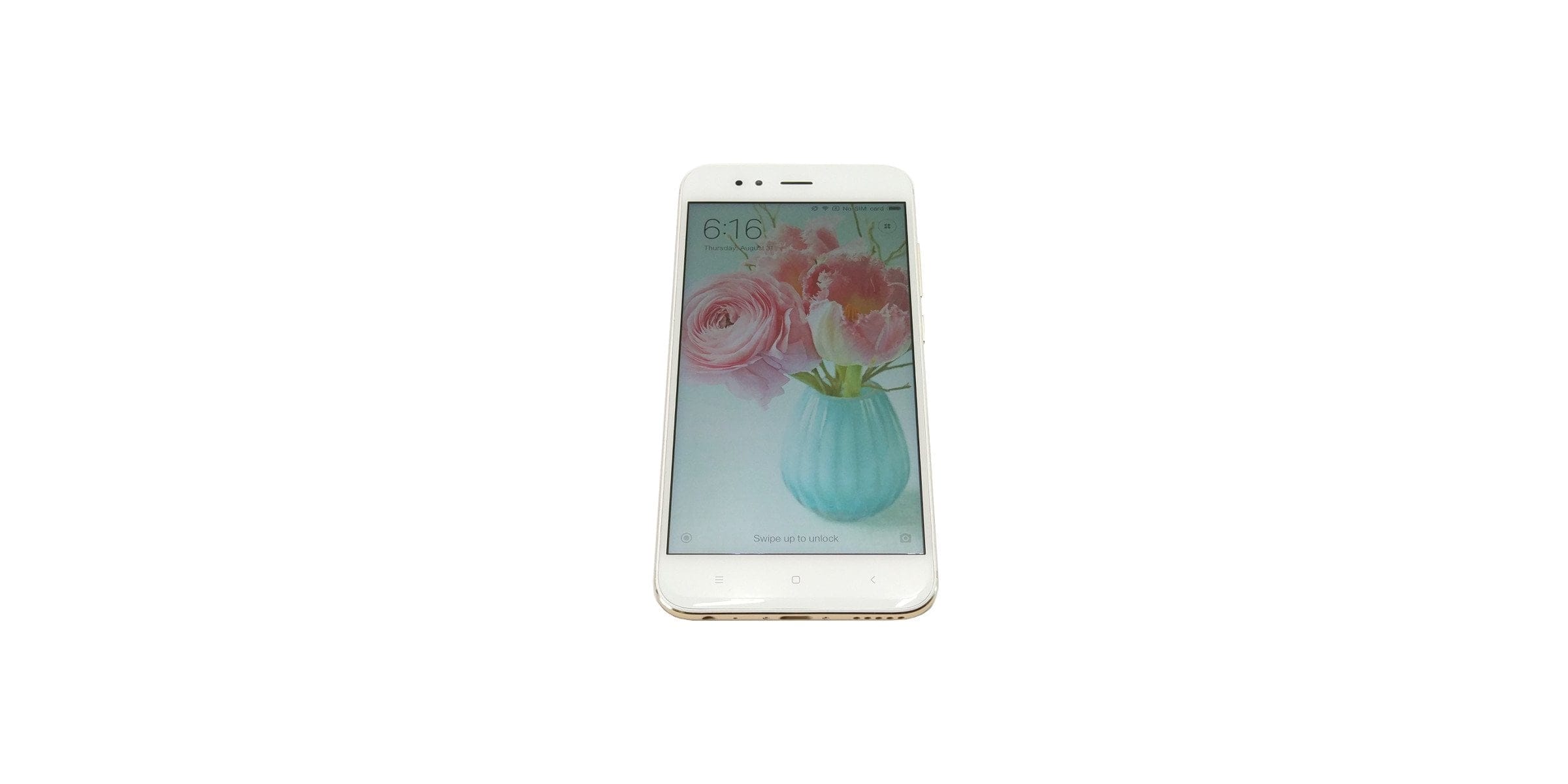
Xiaomi Mi A1 / Xiaomi Mi5X
Good workmanship
Attractive design
Smooth everyday operation
Camera quality in good lighting conditions
Reception quality GPS, WiFi and Bluetooth
Fast fingerprint sensor
Good audio quality
Good battery life
Older processor
Camera quality in low light conditions
No image stabilization
call quality
(No LTE band 20)
Xiaomi is attracting more and more to the global market, which becomes even clearer with the release of the Xiaomi Mi A1 and the identical Xiaomi Mi 5X. Anyone who attaches great importance to up-to-date software will receive a two-year guarantee on clean stock Android updates with the Mi A1 Android One Smartphone. But even with the Chinese model, which has received as one of the first Xiaomi smartphones MIUI 9, you get a smartphone with cutting-edge user interface.
Of course, a purely up-to-date user interface does not make a good smartphone! On the hardware side, the two identical smartphones score with a powerful, albeit older, mid-range processor and a dual main camera that impresses with its above-average recording quality in terms of price. If you decide on the Mi 5X, you have to do without LTE Band 20 again. For the Xiaomi Mi A1 of course this criticism does not apply. Criticisms share both models in terms of call quality, which had some unexpected dropouts in the test. All in all, both smartphones provide a cheap and good overall package. Nevertheless, you should prefer the identical Xiaomi Mi A1 to the Mi 5X because of the far-reaching mobile phone support.

